This website uses cookies to ensure you get the best experience on our website.
- Table of Contents
1 Citations 8 Q&As
Facts about Phospholipid transfer protein.

PLTP also plays an integral role in the uptake of cholesterol from peripheral cells and tissues that is then transported to the liver for degradation and excretion. Two distinct kinds of PLTP exist in plasma: an active form which can transfer PC out of phospholipid vesicles to high-density lipoproteins (HDL), and an inactive form that lacks this capability.
| Human | |
|---|---|
| Gene Name: | PLTP |
| Uniprot: | P55058 |
| Entrez: | 5360 |

| Belongs to: |
|---|
| BPI/LBP/Plunc superfamily |

HDLCQ9; Lipid transfer protein II; phospholipid transfer protein; PLTP
Mass (kDA):
54.739 kDA

| Human | |
|---|---|
| Location: | 20q13.12 |
| Sequence: | 20; NC_000020.11 (45898620..45912364, complement) |
Wide tissue distribution. Placenta > pancreas > lung > kidney > heart > liver > skeletal muscle > brain.
Secreted.





Flow procedures have many choices and options for analyzing PLTP protein. Here are tips to maximize your experiments using Boster Bio:
The Boster Bio PLTP protein measurement system uses an enzyme-linked immunosorbent assay (ELISA) to measure PLTP protein levels in a variety of biological samples. These tests can be used under a variety of physiological conditions and provide essential tools for a comprehensive understanding of PLTP protein function. This ELISA is recommended for researchers, doctors, and clinical lab technicians. It has the accuracy and sensitivity to measure the protein in clinical samples.
The Boster Bio PLTP protein measurement system is sensitive and highly reproducible. The method utilizes the highest quality proteins and reagents and can detect even minute quantities of protein. The system includes a heparin-Sepharose column that separates LA-PLTP from HA-PLTP. The HA-PLTP fraction is highly specific for heparin. Its sensitivity and accuracy make it a valuable analytical tool.
The HA-PLTP elutes from non-denaturing gradient gel electrophoresis with molecular masses of 520 kDa and less. The complex was dissociated from the gel when subjected to a concentration of 8m urea. This mass is consistent with the LA-PLTP, which represents a large protein complex. It could also be a homomultimer or a complex containing lipids and other plasma proteins.
Boster Bio Anti-PLTP Antibody Picoband is available in catalog # A02209-1. It reacts with Human. Depending on the species, the product can be stored at -20°C or 4°C for up to a year. Its anti-PLTP antibody reagent contains 4mg Trehalose. If blocking peptide is required, the reagent may be purchased separately.
We used HA-PLTP chromatography to isolate the protein. The sample was applied to a Superose 6HR column equilibrated with TBS. The fraction was then analyzed by SDS-PAGE using a specific anti-PLTP antibody and Western blotting. The result was a band intensity of 110-120 kDa. We also detected apoE in the fraction.
The LPDP fraction contained PLTP. There were two populations: one in the size range of 12.0 to 17.0 nm and one in the size range of 8.0 to 11.0 nm. The recovery was similar to the one obtained with the HA-PLTP. The eluted fractions did not exhibit any phospholipid transfer activity. The results of our experiment indicate that the HA-PLTP fraction is the best candidate for characterization of PLTP.
The sample buffer used for SDS-PAGE contains sodium dodecyl sulfate (SDS). SDS wraps around the polypeptide backbone, breaking disulfide bonds and dissociating the protein into subunits. The residual positive charge of the proteins is negligible compared to the negative charge imposed by the bound detergent. This is because the SDS-polypeptide complex has the same negative charge and shape.
In addition, we found that PLTP activity coeluted with HDL in the SDS-PAGE analysis. Therefore, PLTP is likely a large complex and has a relatively large size. The apparent molecular mass of the LA-PLTP fraction is 300 kDa, which is indicative of a large protein complex. However, we do not yet have a clearer idea of its physiological function.
To separate the LA-PLTP and HA-PLTP, we used heparin affinity chromatography. In this process, HA-PLTP eluted from the plasma in a fraction that retained 80% of the total PLTP activity. LA-PLTP eluted from the heparin column in the presence of 50% EtOH. We then analyzed this complex using gel filtration to determine the molecular mass.
A typical ELISA is a sandwich-type assay that uses high-affinity antibodies for detecting specific analytes. This technique has the advantage of removing non-specific bound materials. Moreover, ELISAs are a highly sensitive method for measuring specific analytes in crude preparations. To improve the sensitivity of your test, you can perform an ELISA with the PLTP marker.
The PLTP marker is a molecular weight protein associated with apoA-I and apoE-I particles. Its presence in plasma is an indication of the lipid-lowering activity of the blood. It was found that frozen samples and fresh plasma had the same PLTP distribution. Moreover, fresh and frozen samples did not influence the results of the test. Furthermore, ELISAs utilizing the PLTP marker were standardized with molecular weight markers, such as albumin, ferritin, and LDL.
In order to determine the size of the PLTP molecule and the size of the particles associated with it, a polyclonal antibody was used. This antibody reacted weakly with the large LDL region, while the monoclonal antibody showed strong reactivity only with small particles in the HDL region. This result indicates that monoclonal antibodies were more sensitive to PLTP than polyclonal antibodies.
PLTP is secreted by a variety of tissues. It is highly expressed in the central nervous system. In addition, PLTP activity is measured in cerebrospinal fluid. Its various functions are relevant for several neurodegenerative disorders, including immune reactions and lipid metabolism. The PLTP marker is significantly elevated in the brains of Alzheimer's patients and is lower in the tissues of normal controls.
PLTP is a protein with the molecular mass of 520 kDa. This protein has been reported to occur as homomultimers and is a component of plasma proteins. The exact function of PLTP is still under investigation. However, the HA-PLTP marker may be useful for studies on this protein. Here, we present the best uses of this protein marker.
THBS2, POSTN, and PLTP were detected with specific antibodies. MCT significantly increased the expression of these proteins and decreased the expression of PLTP. This was accompanied by increased expression of THBS2.
Whether you're a newbie or a seasoned pro, the Boster Bio guide to immunohistochemistry can help you get the most out of your ELISA experiments. The tips and tricks in this comprehensive guide cover the fundamentals of immunohistochemistry, from sample preparation to antibodies and detection systems. The guide also answers commonly asked questions, including how to create a negative control condition and how to maximize your sensitivity.
PMID: 8132678 by Day J.R., et al. Complete cDNA encoding human phospholipid transfer protein from human endothelial cells.
PMID: 10333293 by Qu S.J., et al. Role of cysteine residues in human plasma phospholipid transfer protein.
*More publications can be found for each product on its corresponding product page